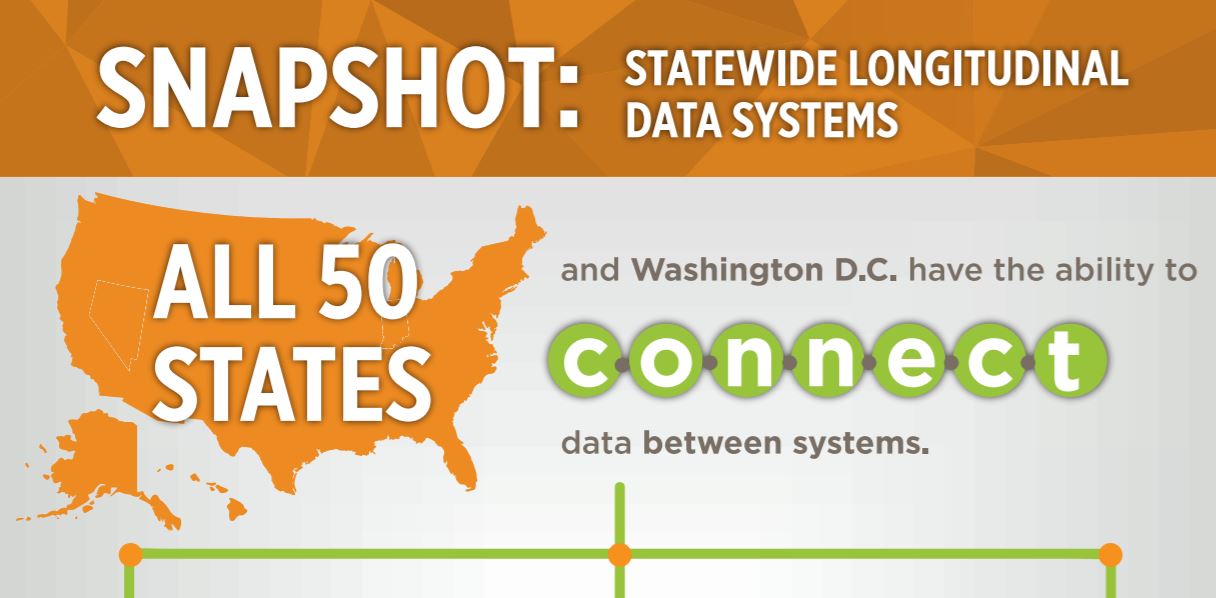With states increasing their focus on supporting successful educational outcomes for students and developing strategies to meet workforce demands, examining data that connects from a student’s early education years to their postsecondary education can allow states to analyze the data in a different and more complex way. However, the structure of data systems and the policies regarding these systems can vary from state to state, with some states not yet having established a Statewide Longitudinal Data System (SLDS).
This new 50-State Comparison: Statewide Longitudinal Data Systems from Education Commission of the States provides a national comparison of how all 50 states plus Washington, D.C., approach policies related to SLDS.
“As states tackle complex policy issues spanning the P20W spectrum - early learning, K-12, postsecondary and workforce – longitudinal data plays a vital role in informing educational policy,” said Brian Sponsler, vice president of policy at Education Commission of the States. “This 50-State Comparison can serve as a comprehensive resource to policymakers as they look to address issues specific to their state through data analysis.”
Some key takeaways from this report:
- All 50 states plus Washington D.C., have the ability to connect data between systems.
- Thirty-eight states plus Washington D.C., connect data between at least two of the four core systems - early learning, K-12, postsecondary and workforce.
- Seventeen states plus Washington D.C., have a full P20W system - a data system that connects data from all four core agencies (as defined in this comparison) across the education spectrum.
For questions, contact Education Commission of the States Communications Director Amy Skinner at [email protected] or (303) 299.3609.


